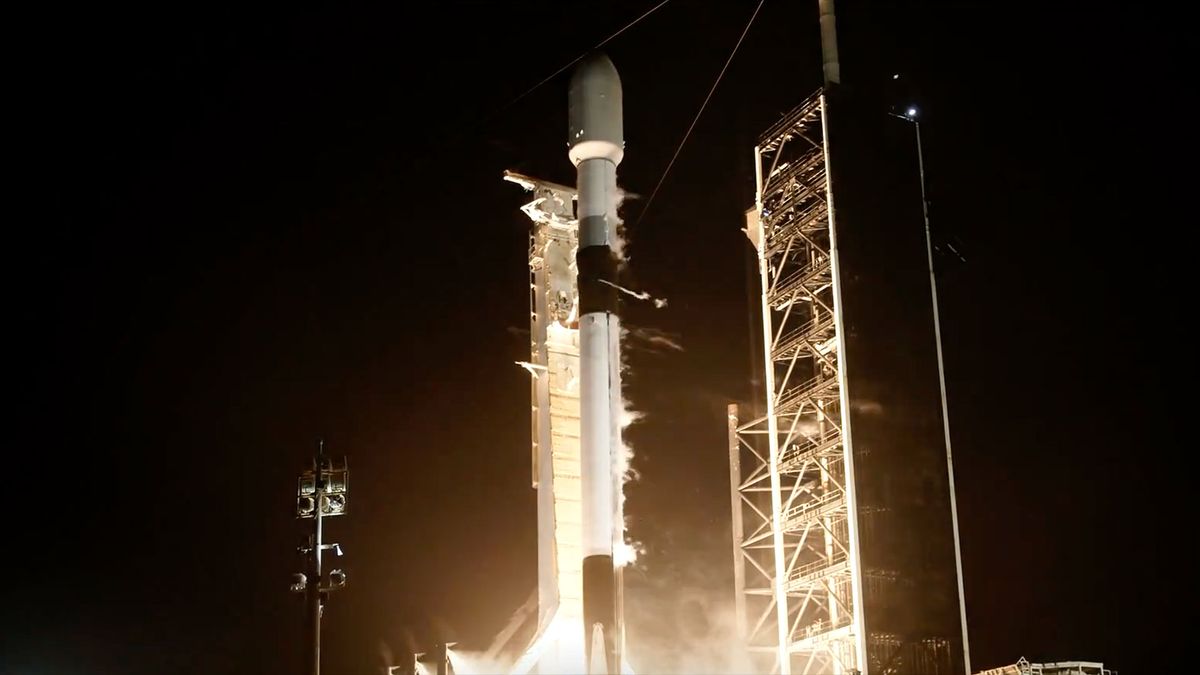The TRAPPIST-1 system is the most exciting group of exoplanets ever discovered by astronomers. The system contains seven rocky planets orbiting a very cool red dwarf star about 40 light-years from Earth. Many planets are located in the star’s habitable zone.
With the James Webb Space Telescope’s ability to detect and study the atmospheres of distant planets orbiting other stars, data on TRAPPIST planets has been highly anticipated. Now astronomers have released detailed information about the second planet, TRAPPIST-1 c, which is supposed to be a Venus-like world. Unlike Venus, JWST failed to detect any trace of a thick atmosphere of carbon dioxide.
“I was a little sad that we didn’t see a thick carbon dioxide atmosphere, but I’m mostly amazed that JWST can detect signals like this at all.” Dr. Laura Kreidberg on Twitter. She is the director of APEx (Exoplanet Atmospheric Physics) at the Max Planck Institute for Astronomy in Germany, and a co-author on A new paper published today in the journal Nature. “We really are entering the era of characterizing rocky exoplanets!… This planet has the same size and radiation as Venus, but its atmosphere is *not* like Venus. It could be a thin atmosphere without a lot of CO2, or it could be bare rock Like T1b [TRAPPIST 1 b]. “
In March 2023, astronomers shared JWST data on TRAPPIST-1 b, the innermost planet. Its orbital distance is about one-hundredth that of Earth’s orbital distance, and thus it is not within the system’s habitable zone. JWST detected no atmosphere at all, which was unexpected due to the hellish conditions of being so close to the star.
All of the planets in the TRAPPIST-1 system have been previously observed using the Hubble and Spitzer space telescopes, and to date, no atmospheric features have been detected. But still, astronomers could not exclude this possibility. With JWST’s infrared capabilities, it has the ability to detect “heavy” molecules such as carbon dioxide, oxygen, and methane, and thus has the ability to determine whether or not the TRAPPIST-1 planets have atmospheres, and if so, what they are made of. .
Orbiting its star at a distance of 0.016 AU (about 2.4 million kilometers, 1.5 million miles), TRAPPIST-1 c completes one orbit in just 2.42 Earth days. TRAPPIST-1 c is slightly larger than Earth’s, but has about the same density, which indicates that it must have a rocky composition. A JWST measurement of the 15-micron mid-infrared light emitted by TRAPPIST-1 c indicates that the planet either has an exposed rocky surface or a very thin carbon dioxide atmosphere.
“We want to know whether or not rocky planets have atmospheres,” said Sebastien Zeba, a Max Planck graduate student and first author on the new paper. In a NASA press release. In the past, we could only study planets with thick, hydrogen-rich atmospheres. With Webb, we can finally start looking for atmospheres dominated by oxygen, nitrogen, and carbon dioxide.”

Zieba and his team used the MIRI (medium infrared JWST instrument) to observe the TRAPPIST-1 system on four different occasions (on October 27 and 30, and November 6 and 30, 2022) as Planet 1c moved behind the star, a phenomenon known as a secondary eclipse. . By comparing the brightness when the planet is behind the star (starlight only) with the brightness when the planet is next to the star (light from the star and planet combined), the team was able to calculate the amount of mid-infrared light at 15-micron wavelengths that the planet is emitting.
NASA said The amount of mid-infrared light emitted by a planet is directly related to its temperature, which in turn is affected by the atmosphere. Carbon dioxide preferentially absorbs 15-micron light, which makes the planet appear dimmer at this wavelength. However, clouds can reflect light, making the planet appear brighter and masking the presence of carbon dioxide.
In addition, an intrinsic atmosphere of any composition would redistribute heat from the day side to the night side, causing the temperature on the day side to be lower than it would be without an atmosphere. Because TRAPPIST-1 c orbits so close to its star — about 1/50th the distance between Venus and the Sun — it is thought to be tidally locked, with one side in perpetual daylight and the other in endless darkness.
“Our results are consistent with the planet being a bare rock with no atmosphere, or the planet having a very thin carbon dioxide atmosphere (thinner than the atmosphere on Earth or even Mars) with no clouds,” Ziba said. “If the planet had a thick carbon dioxide atmosphere, we would have observed really shallow secondary eclipses, or no eclipses at all. This is because the carbon dioxide would absorb all 15 microns of light, so we wouldn’t detect any light coming from the planet.”

in their paper, The team said that “the absence of heavy, CO2– The rich atmosphere on TRAPPIST-1? c indicates a poor, relatively volatile formation history … If all the planets in the system formed in the same way, this indicates a limited stock of volatiles for potentially habitable planets in the system. ”
Kreidberg said on Twitter The amount of water at the formation of TRAPPIST-1 c would be less than 10 Earth’s oceans. “This may indicate a pattern of planetary formation that is not terribly water-rich (although it does not guarantee that c will be in a similar way to exoplanets),” she said.
Later this year, NASA said, researchers will conduct a follow-up probe to observe the full orbits of the TRAPPIST-1 b and TRAPPIST-1 c engines. This would allow seeing how temperatures change from the day to night side of two planets and would provide more constraints on whether or not they have atmospheres. In addition, other TRAPPIST-1 planets will also be observed. So, stay tuned for the upcoming exciting data release.

“Extreme travel lover. Bacon fanatic. Troublemaker. Introvert. Passionate music fanatic.”







More Stories
'Survivor' host Jeff Probst says Season 50 will be all players returning
SpaceX has launched a Falcon 9 rocket on its record-setting 20th mission
Sixto Roll & Write review, test and critique